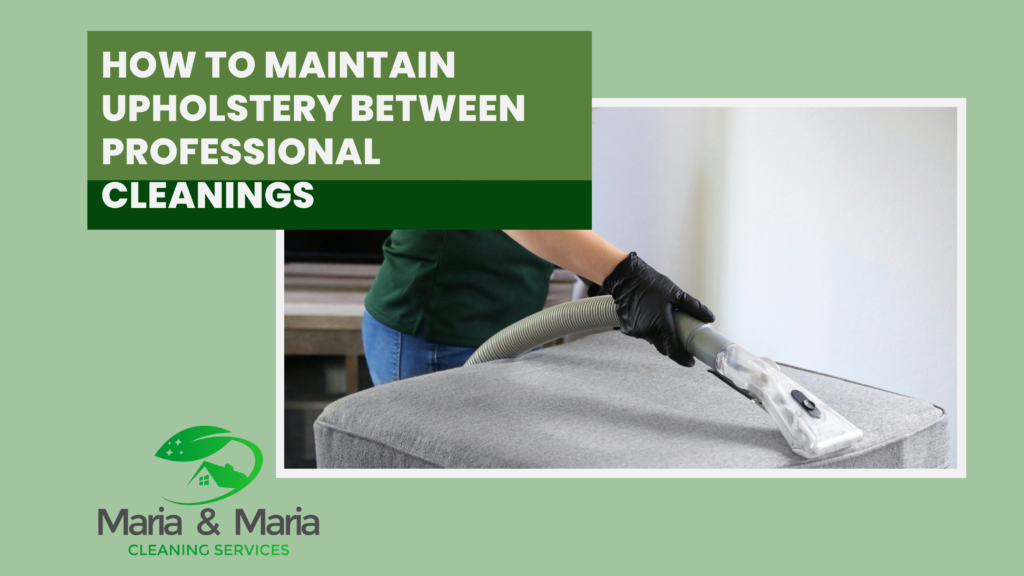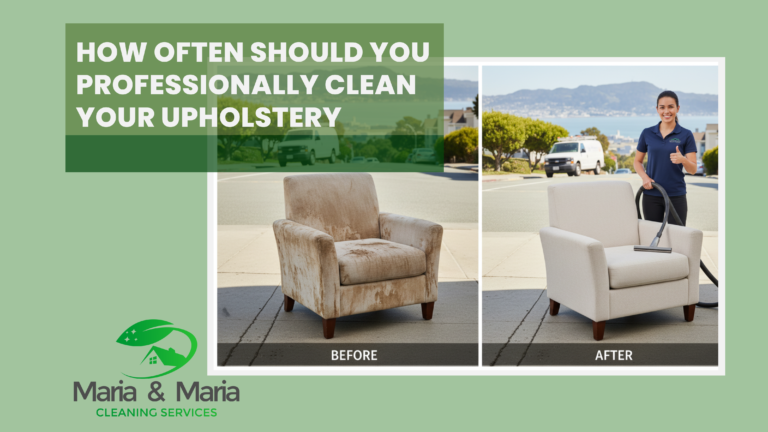Upholstered furniture is an essential part of any home or office, offering both comfort and style. However, over time, daily use can lead to dirt, stains, and wear, reducing the aesthetic appeal and comfort of your furniture. While professional cleaning services can work wonders, regular maintenance between cleanings can extend the life of your upholstery, preserve its beauty, and save you money in the long run. In this article, we will provide expert tips on how to maintain your upholstery, keep it clean, and prevent costly repairs.
1. Vacuum Regularly
One of the simplest yet most effective ways to maintain your upholstery is by vacuuming it regularly. Dirt, dust, and debris can accumulate on your furniture, causing wear and tear over time. By vacuuming your upholstery weekly, you can prevent these particles from embedding deep into the fabric or leather, which can lead to permanent stains or abrasions.
Use a vacuum cleaner with a soft brush attachment to gently remove dirt and dust from the surface of your upholstery. Pay special attention to crevices and seams, where dirt tends to collect. For upholstered furniture with removable cushions, flip and rotate them regularly to ensure even wear and to help maintain their shape.
2. Spot Clean Spills Immediately
Accidents happen, and when they do, it’s important to act quickly. The longer spills sit on your upholstery, the harder they are to remove. For fabric furniture, blot the affected area immediately with a clean, dry cloth to absorb excess liquid. Never rub the stain, as this can push the liquid further into the fabric and make the stain harder to remove.
For more stubborn stains, use a mild upholstery cleaner or make your own cleaning solution with water and dish soap. Test any cleaning product on a hidden area of the fabric to ensure it doesn’t cause discoloration or damage. For leather upholstery, wipe spills promptly with a soft, damp cloth, and use a specialized leather cleaner if needed.
3. Use Upholstery Protectors
Upholstery protectors, such as slipcovers, can be a great investment to help preserve the look of your furniture. These covers act as a shield, preventing dirt, spills, and stains from directly affecting the upholstery. They are especially useful in homes with children or pets, where accidents are more likely to occur.
For leather furniture, consider using a leather conditioner or protector to maintain the material’s softness and prevent cracking or fading. Always follow the manufacturer’s recommendations when using these products to ensure their effectiveness.
4. Rotate Cushions and Pillows
If your furniture has removable cushions or pillows, rotating them regularly can help prevent uneven wear. Over time, sitting in the same position can cause certain areas of the cushions to lose shape or flatten. By flipping and rotating your cushions, you can ensure that the wear is distributed evenly, which will help your furniture maintain its shape and comfort for a longer period.
This is especially important for couches and chairs, where the cushions are frequently subjected to pressure. A simple rotation once every few months can help preserve the furniture’s appearance and feel.
5. Protect Against Sunlight and Heat
Exposure to direct sunlight and heat can cause upholstery, especially fabric and leather, to fade and degrade over time. To prevent this, consider placing your furniture away from windows or using blinds and curtains to limit direct sunlight. If your furniture is exposed to sunlight for long periods, consider investing in UV-protective window films to block harmful rays.
For leather furniture, prolonged exposure to heat can cause the material to dry out and crack. Avoid placing leather chairs or sofas near radiators, air conditioning units, or other heat sources to maintain the leather’s integrity.
6. Clean Fabric Furniture with a Steam Cleaner
While vacuuming and spot cleaning are essential, a steam cleaner can provide a deeper clean for fabric furniture. Steam cleaning removes dirt, bacteria, and allergens from the upholstery without the need for harsh chemicals. Be sure to follow the manufacturer’s instructions when using a steam cleaner, and test it on a small area of fabric first to ensure it doesn’t cause any damage.
Steam cleaning also helps to revitalize the fabric, restoring its softness and appearance. It is an excellent way to freshen up your upholstery between professional cleanings and ensure that it stays in great condition.
7. Address Pet Hair and Dander
Pets are beloved members of the family, but they can also cause significant wear and tear on your upholstery. Pet hair, dander, and dirt can accumulate quickly on fabric and leather furniture, especially if your pets shed frequently. To keep your upholstery clean, use a lint roller or pet hair remover to remove hair and dander. You can also use a vacuum cleaner with a pet hair attachment to clean your furniture more effectively.
For leather furniture, regularly wipe the surface with a soft cloth to remove pet hair and dander. Be sure to condition the leather after cleaning to keep it supple and prevent cracking.
8. Schedule Regular Professional Cleanings
While maintaining your upholstery between cleanings is essential, it’s also important to schedule professional cleanings periodically. Professional cleaning services have the expertise and equipment needed to deep clean your furniture and remove stubborn stains, dirt, and allergens. Regular professional cleanings can extend the life of your upholstery, improve its appearance, and ensure that it stays fresh and sanitized.
Depending on the type of fabric and usage, it’s recommended to schedule professional upholstery cleaning every 12-18 months. However, high-traffic areas or homes with pets and children may require more frequent cleanings.
Conclusion
Maintaining your upholstery between professional cleanings is essential for preserving its beauty, comfort, and durability. By following these simple tips, vacuuming regularly, spot cleaning spills immediately, using protectors, and rotating cushions, you can keep your furniture looking like new for longer. Proper care not only enhances the appearance of your furniture but also protects it from long-term damage, saving you money on expensive repairs or replacements.
With the right maintenance, your upholstered furniture can continue to provide both style and comfort for years to come. Whether you’re tackling everyday dirt or looking for a deep clean, taking proactive steps to care for your furniture is the key to keeping it in excellent condition.






